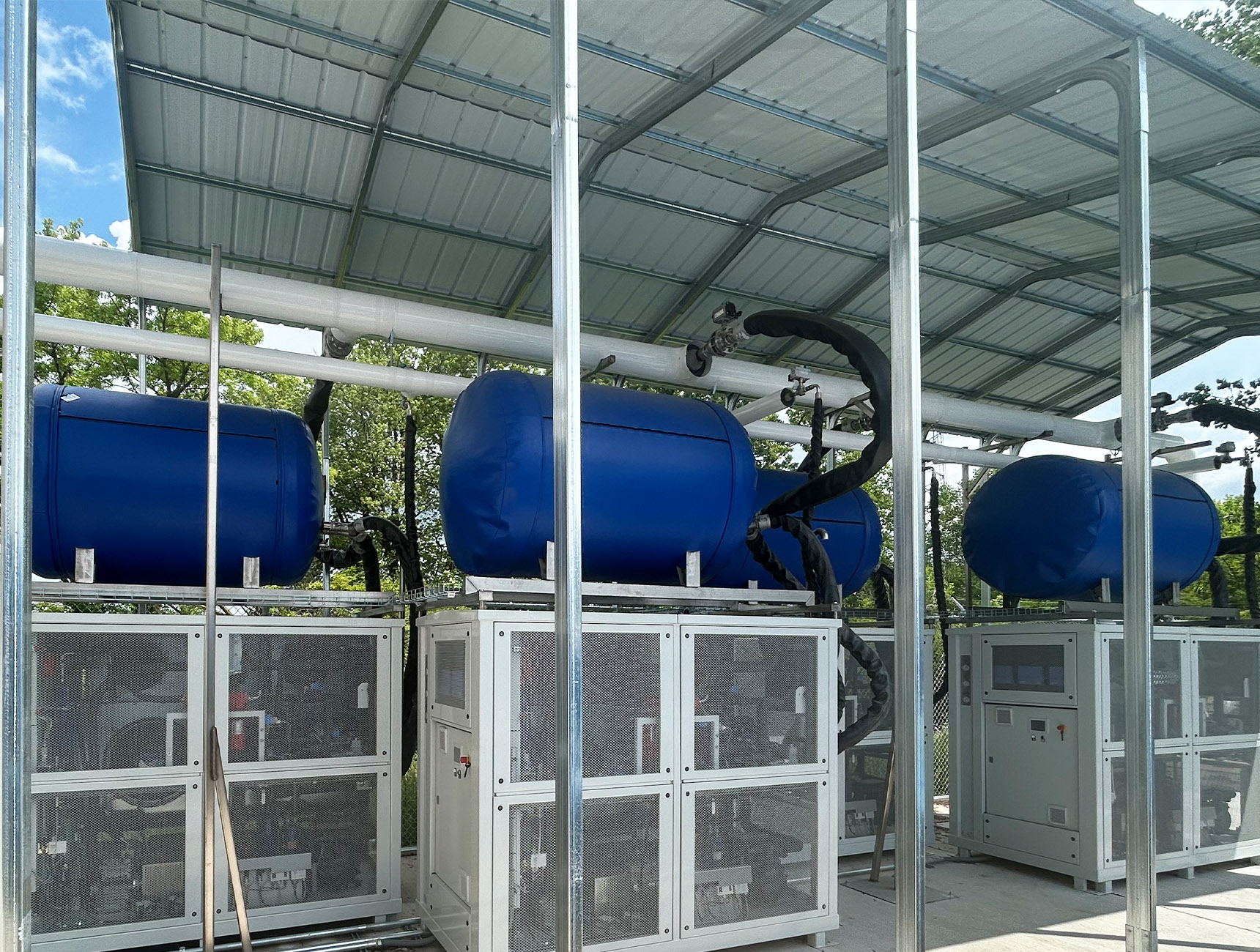CO₂ Reclamation Process
The CO₂ reclamation process captures carbon dioxide emissions and repurposes them into a usable form of dry ice. This environmentally friendly approach not only reduces greenhouse gas emissions but also supports sustainability by minimizing waste. By recycling CO₂ rather than sourcing it from new emissions, the production process becomes more efficient and cost-effective—ultimately lowering overall production costs while reducing environmental impact.


Environmentally Friendly
Captures CO₂ Emissions: Prevents carbon dioxide from being released into the atmosphere by capturing it from industrial processes.
Reduces Greenhouse Gases: Helps lower overall carbon emissions, contributing to climate change mitigation.
Reuses Existing CO₂: Converts captured CO₂ into dry ice, eliminating the need to extract new carbon dioxide from natural sources.
Supports Circular Economy: Promotes a sustainable cycle by reusing industrial byproducts rather than discarding them.
Eco-Conscious Cooling Solution: Aligns with green initiatives and environmentally responsible business practices.
Sustainable Manufacturing: Contributes to cleaner production methods and supports companies’ environmental compliance goals.
Efficient & Cost Effective
Best Customer Pricing: By cutting costs and increasing reliability, reclamation helps improve overall cost.
Improves Operational Efficiency: Reclaimed CO₂ provides a steady, reliable supply, minimizing disruptions in dry ice production.
Reduces Raw Material Costs: Using captured CO₂ eliminates the need for newly sourced gas, lowering input costs.
Streamlines Production: Integrating CO₂ reclamation into the manufacturing process enhances overall workflow and reduces downtime.
Minimizes Waste: Efficient use of CO₂ reduces material loss, maximizing output from existing resources.
Decreases Long-Term Expenses: Sustainable sourcing methods contribute to predictable, lower-cost production over time.


Efficient & Cost Effective
Best Customer Pricing: By cutting costs and increasing reliability, reclamation helps improve overall cost.
Improves Operational Efficiency: Reclaimed CO₂ provides a steady, reliable supply, minimizing disruptions in dry ice production.
Reduces Raw Material Costs: Using captured CO₂ eliminates the need for newly sourced gas, lowering input costs.
Streamlines Production: Integrating CO₂ reclamation into the manufacturing process enhances overall workflow and reduces downtime.
Minimizes Waste: Efficient use of CO₂ reduces material loss, maximizing output from existing resources.
Decreases Long-Term Expenses: Sustainable sourcing methods contribute to predictable, lower-cost production over time.
